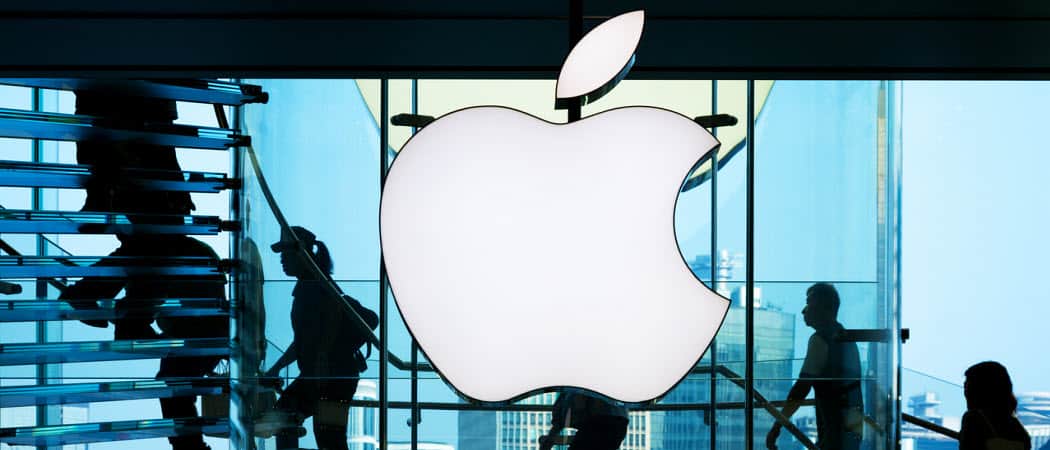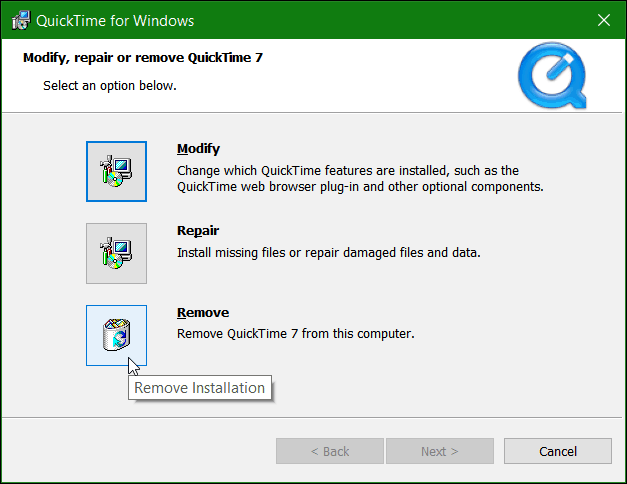The Computer Emergency Readiness Team, which is part of the Department of Homeland Security, issued security alert (TA16-105A) on Thursday calling for all Windows users to uninstall the program. Trend Micro says it hasn’t discovered any active attacks that target the newly found vulnerabilities (at least not yet). According to Trend Micro’s security bulletin: However, since Apple has abandoned QuickTime for Windows and will no longer support it, the only way to protect yourself from an attack is to get rid of it. This security issue only affects Windows and not OS X systems. If you have iTunes installed on your Windows PC, chances are you also have QuickTime as it came bundled in the iTunes installer before version 10.5.
Uninstall QuickTime on Windows
To uninstall it from Windows 10, go to Settings > System > Apps & features. Scroll down to QuickTime, click it and then uninstall.
To uninstall it from Windows 7, open Control Panel and then select Programs and Features. Find QuickTime, right-click it, and hit Uninstall. Then follow the uninstall wizard on the screen.
Keep in mind that Apple installs a bunch of software with iTunes, and using this method only gets rid of QuickTime, which is what you want. It’s worth noting, though, that if you want to get rid of all traces of QuickTime that its built-in uninstaller typically misses, use a program like Revo Uninstaller to remove it. For more details on uninstalling software thoroughly, read our article: How Do I Completely Uninstall Software on Windows? Update 4/18/2016: Apple has been quiet about this situation, and today finally officially announced that it is no longer supporting QuickTime to the WallStreet Journal: You can find the article here. Apple QuickTime is long in the tooth and isn’t much anymore like it used to be. Even Apple’s own movie trailer site no longer requires it. Personally, I can’t even remember the last time I used it. What’s your take? Do you use QuickTime on Windows or have you ever used it? Leave a comment below and let us know your thoughts on the subject. Are there any alternatives you can use in conjunction with your video editing programs or any type of work arounds? As far as just viewing videos, there are plenty of other options for Windows, our favorite being VLC. Also, remember that this only affects Windows and not OS X. As noted in the article, there haven’t been any known exploits yet, and QuickTime will continue to work. However, since Apple is no longer supporting it for Windows, it leaves your PC vulnerable going forward. We’ll continue to follow and report on the story as it develops. Apple hasn’t supported QuickTime for Windows 8 or 10 anyway. Still, it would have been nice for Apple to make a statement or send current users an email explaining the issue at least. By not updating it since January and apparently no longer supporting it for Windows, it could be a devious ploy by Apple to make people in the video industry to buy a Mac…? I would like to be sure whether or not I am safe if all I ever use QT for is videos shot and edited by myself. Thank you very much in advance! Have a nice day! For any Media Composer or Premiere users I’d recommend exporting your video materials to an alternative codec like DNxHD and then using a free third-party converter like FreeStudio to convert your files to H.264, ProRes or whatever else you may need. As for playback of MOV on Windows your best bet would be Media Player Classic Home Cinema or VLC – both feature built-in codecs which should play back your videos without a single hiccup. Also – I know – these solutions aren’t necessarily the best ones but if you’re panicking and you just want a quick fix they should do for the time being. Besides, it seens senseless to pay three times the price for a machine that essentially does the sane job… I am a sound designer, and find that Pro Tools runs perfectly good on an i7. Comment Name * Email *
Δ Save my name and email and send me emails as new comments are made to this post.
![]()



